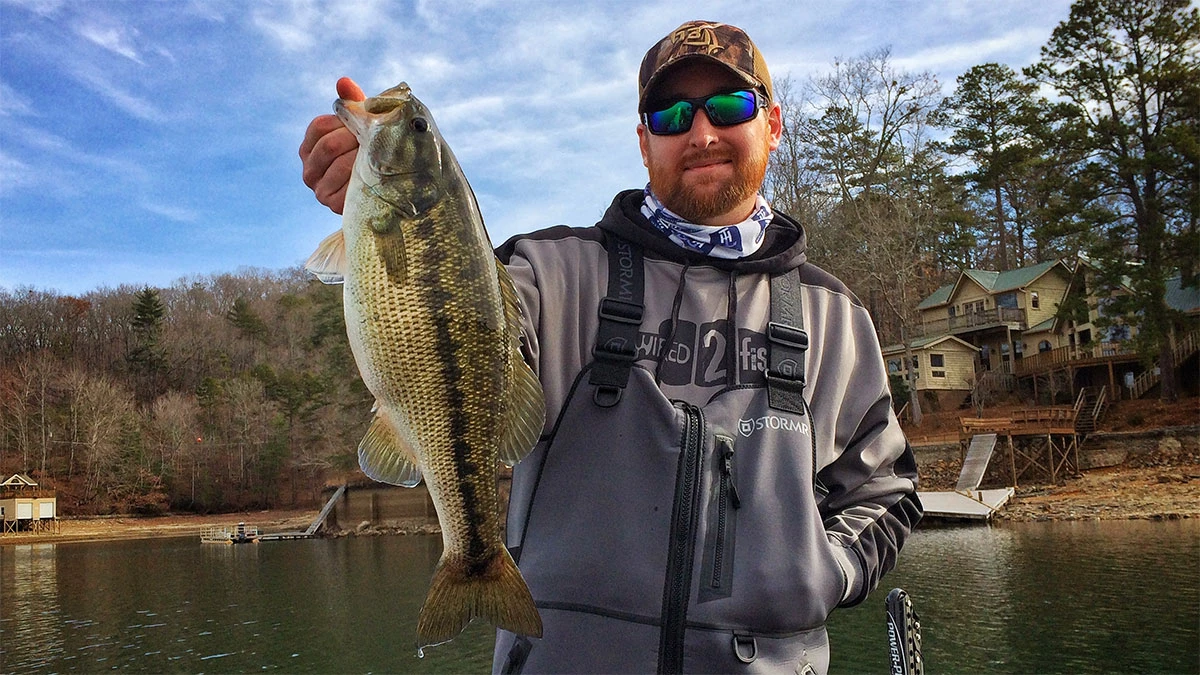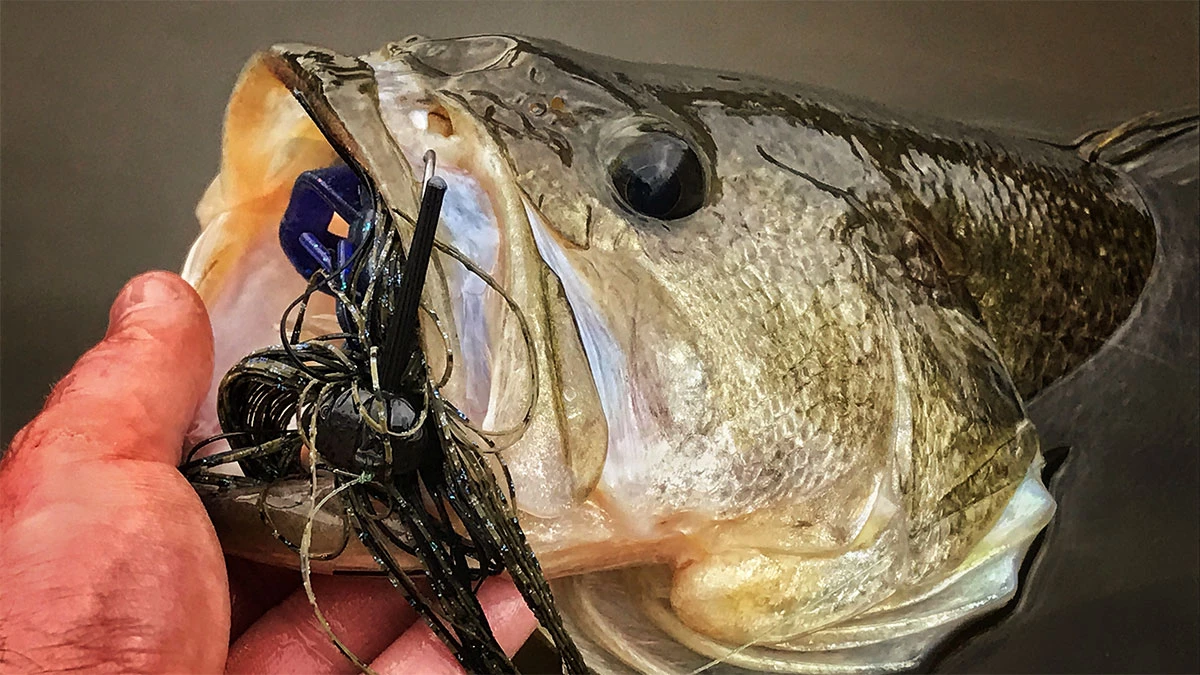Warning: Undefined variable $k in /home/nginx/domains/wired2fishcom.bigscoots-staging.com/public/wp-content/themes/understrap-child-0.6.0/functions.php on line 984
Warning: Undefined variable $k in /home/nginx/domains/wired2fishcom.bigscoots-staging.com/public/wp-content/themes/understrap-child-0.6.0/functions.php on line 987
Alright, guys. I’m going to get downright real with you for this article; I feel like I become a bit more terse in my articles this time of year and there’s probably a dang good reason for it. I’m grumpy right now.
I absolutely cannot stand this bizarre annual winter purgatory in which we’re currently stuck. The fish ain’t biting, most of the hunting seasons are closed, the Braves ain’t playing and college football is a thing of the past. I suppose the back-to-back National Championships by my mighty Georgia Bulldogs helps ease the pain just a bit. But I digress.
But for real, folks. I think everyone is a little grumpy right now. I work from home, so I see my wife in the daylight on the weekends only, it’s always raining and if you’re anything like me, it’s just kind of boring right now. The spring is coming fast but until the birds chirp and the flowers bloom, how in the world do you kill the time? There are only so many treble hooks to replace and boats to detail in the shop.
I’m here to help you with this. Now, before we get into it, I think it’s important to understand that this isn’t the most exciting way to catch a bass. If you remain patient, however, and follow the tips I’m about to share, I can almost guarantee a good day on the water. Stick with me and let’s go through what I call my “winter purgatory” pattern.

Find, drag and pound channel swings
Okay, so we’ve established how crappy the weather is right now so I’ll do my best to stop harping on that. But it’s also important to acknowledge because it’s not pleasant to idle around in your boat for hours right looking for stuff to fish. You’ll be a popsicle if you try that.
Instead of over preparing and overthinking the situation, I encourage you to make a concerted effort to keep things as simple as possible. Here enters the trusty and beloved channel-swing banks. They’re not as pretty as a springtime grass bed but they’re easy to see with your naked eyes and they hold a pile of fish right now. If you can think of a channel-swing bank on your favorite lake right now, I guarantee there are multiple big bass sitting on it as you’re reading this article.
For those who may not know what a channel-swing bank is, let’s spend a few sentences going over the rudimentary basics. All creek and river arms have a deep channel that’s primarily situated in the middle between the banks on each side. But over time, both natural current and wind current push an excess of water against the outside bends of these areas. This is why you’ll often see steep walls on the banks of skinny rivers and creeks; the water has been beating these areas for years and creating a steep bank.
I’m of the belief that the large majority of bass anglers prefer to fish shallow water—it’s simply more appealing to target visual cover and those shallow bites are often most aggressive. I’m the same way most of the year… except now. I’d sell my truck to get a bite some days and these unassuming channel-swing banks are the way to get a lot of consistent success.
So if you see a steep bank, stop and survey it. Due to erosion, you’ll often see fallen trees on these banks and you’ll be tempted to revert back to your shallow-water tendencies but try your best to withstand the urge. Instead, stay way off the bank and probe the fallen tree starting with the presumed treetop and slowly making your way towards the bank.
My reasoning for this comes after a lot of screw-ups fishing this kind of cover. I was always so tempted to fish anything visible. So if a big tree was in the water and only the first 12 feet of the trunk was visible, I’d troll right over to it and start plunking my jig all over the place. I’d catch some fish, but little did I realize that my dang boat was hovering over the rest of the laydown and spooking the rest of the fish. So when fishing a tree that might have held a dozen fish, I’d catch 2 and mess everything up due to the shallow-water commotion I was causing.
So when you run a cross a channel-swing bank, do your very best to start as far away from the bank as you can in order to maintain some semblance of stealth. Your first few casts may not hit any cover and that’s okay; inch closer to the bank and you’ll eventually feel a multitude of tree tops and other hard cover that has washed against the steep bank throughout the years.
It’s important to understand that bass congregate in these areas this time of year. These areas offer a dynamic environment that revolves heavily around the principle of verticality. Steep banks allow a bass to change their environment very quickly. With a few flicks of their tail they can go from 20 feet deep to snugged up against the trunk of a laydown in 2 feet or water within seconds. That’s very important this time of year because the weather can be absolutely stupid as we touched on earlier. One day it’ll be 60 degrees with tornadoes and the very next day it may be in the 20s with ice covering your line guides. The bass absolutely know this is a volatile time of year, so they love to hang around these steep banks that give them the ability to quickly adapt to this wild weather.

A few things to keep in mind
If you’ve read a bunch of fishing stuff over the years, you’ve probably had it branded into your skull that you’re not supposed to run up-river on your favorite fisheries this time of year. I am here to tell you that is absolutely not true. These channel swings are often found in the skinnier waters in your local reservoirs so do not be afraid to explore these areas. You’ll find muddier water up there, so make sure you have several packs of dark-colored soft plastics on you (more on that in a second). Now, don’t go running up there 12 hours after a hard rain. But if you haven’t had any big-time rain for the past three days or so, the bass don’t care. They’ll be there. A little muddy water never hurt anybody.
As you probe these channel swings, you’re not going to find fish on every single one of them so don’t get spun out. It’s actually a pretty efficient pattern because in my personal experience, I’ve found that if they’re in the area, they normally bite within the first few casts. Also worth noting is the importance of repeated casts—if you catch one, hurry up and unook it. There’s a gigantic chance that there are several more in the exact same area so it’s imperative to put another bait in front of ‘em while they’re actively feeding.
In regards to bait selection, do not overthink things and make ‘em overcomplicated. Grab you a 1/2- or 5/8-ounce jig, a crawfish-style trailer, let it hit the bottom and slowly drag it back towards you. Don’t get all wired up about your color selection if it’s dirty; if it’s sunny, maybe have a little glitter in your trailer and if it’s cloudy, maybe go for a more opaque trailer. I could act like I’m super smart about this stuff and get all kinds of scientific but man… I really don’t think it matters. Put a dark jig in front of ‘em and see what happens. I do, however, tend to lean more towards an oblong-shaped head because it seems to not tumble as much if there is a heavier current.
I normally use a 7-foot, 6-inch heavy-action rod because the added length helps me make longer casts which allows me to stay further away from the presumed strike zone. Line selection can also be important, in my opinion. I’ll either use 17- or 20-pound fluorocarbon line but I’m certainly not afraid to use 50-pound braided line either because it casts like a rocket.
The bottom line? We’re all getting sick of this time of year. But if it’s going to be cold and nasty out there, we might as well do our best to get off the couch and get a few bites. This is one pattern that will do that if you remain patient. Follow these tips, bundle up and keep a cool head on the water and you’re going to scratch the itch and cure a little bit of that cabin fever we all have.












